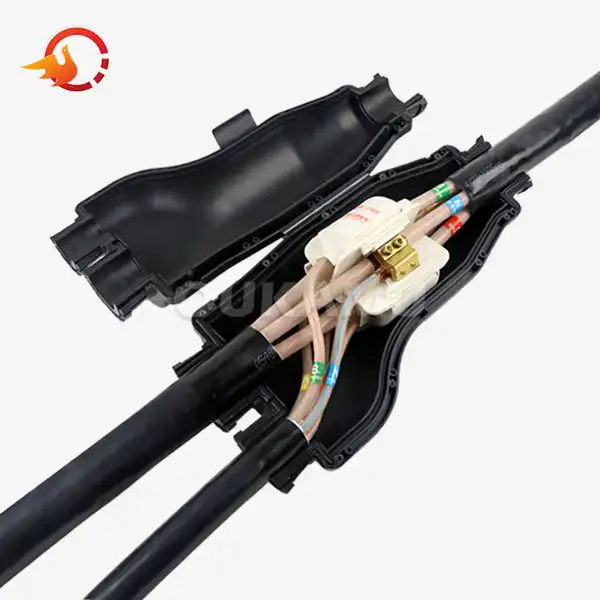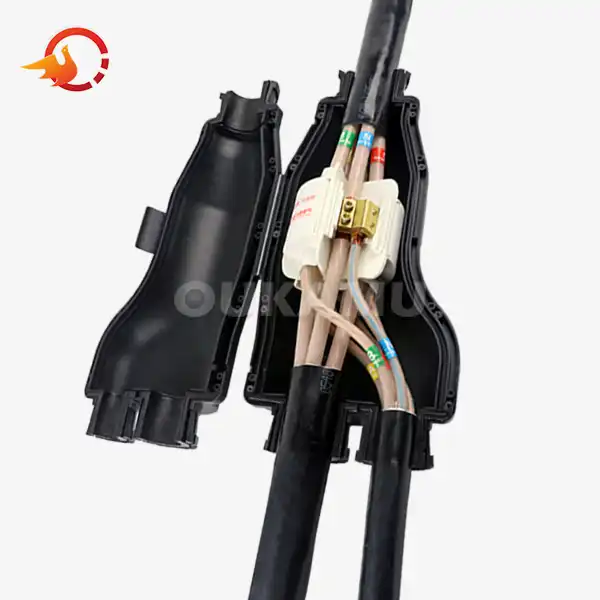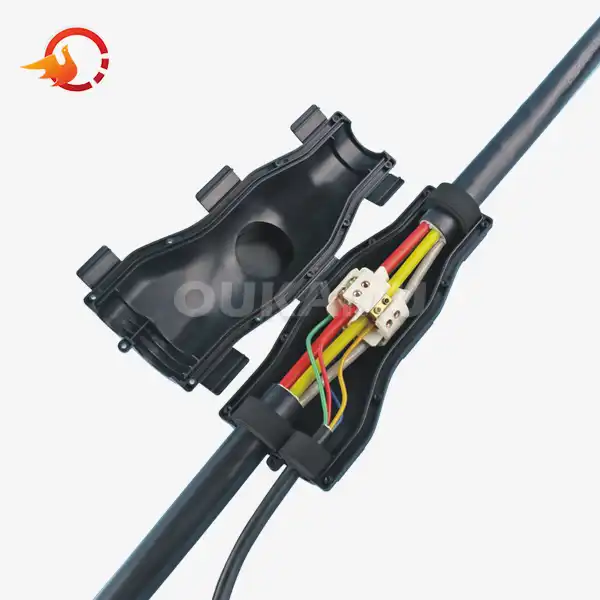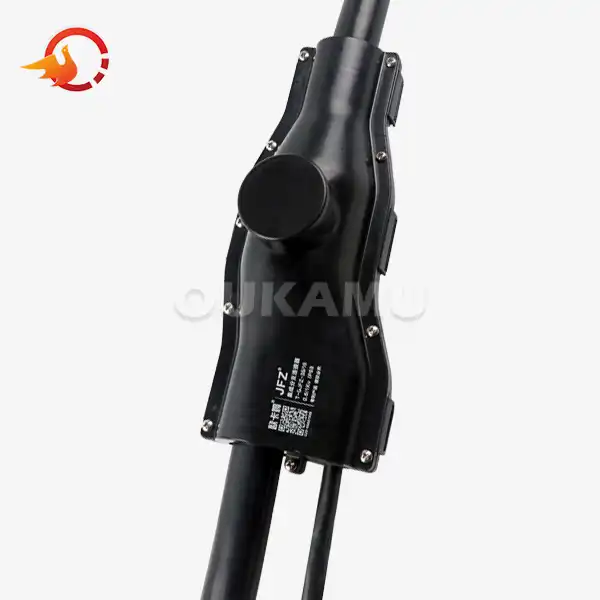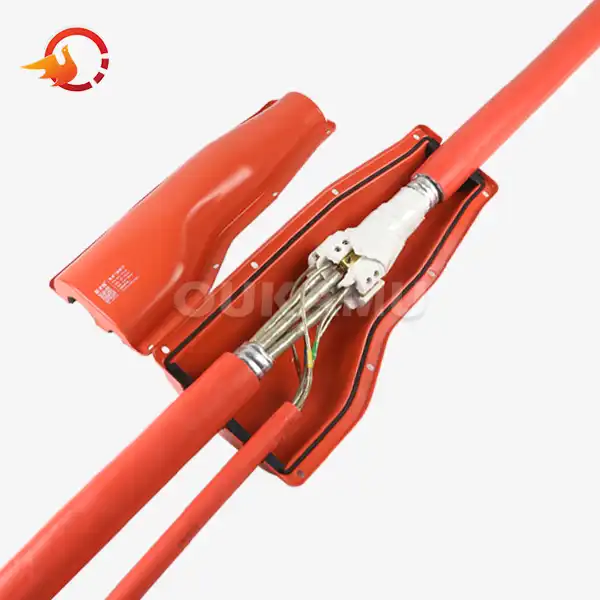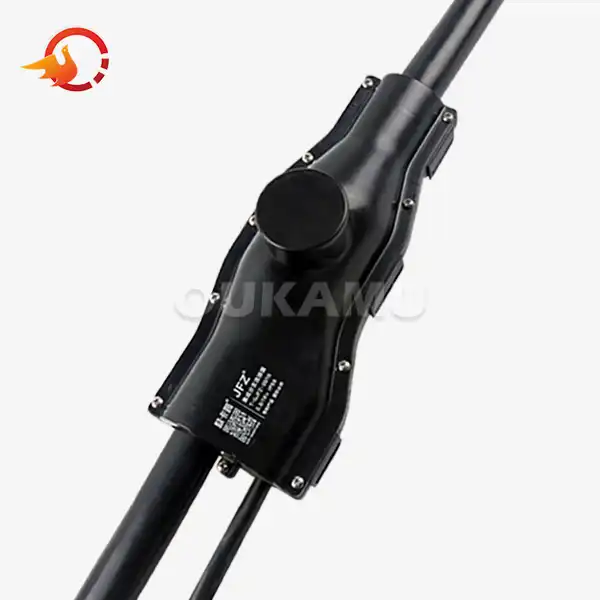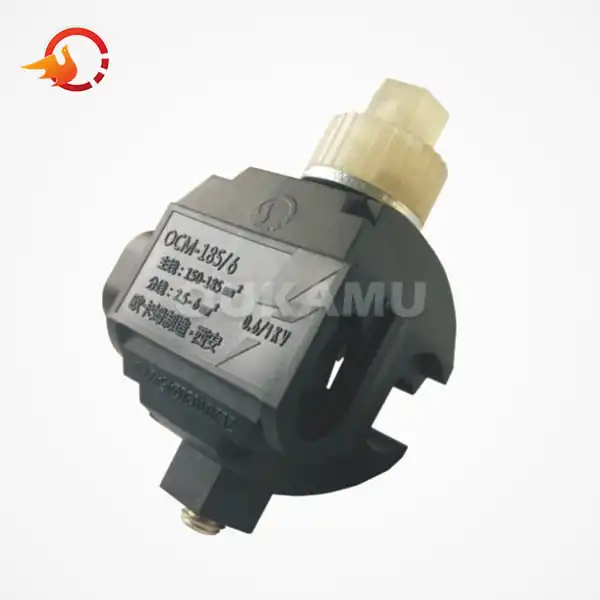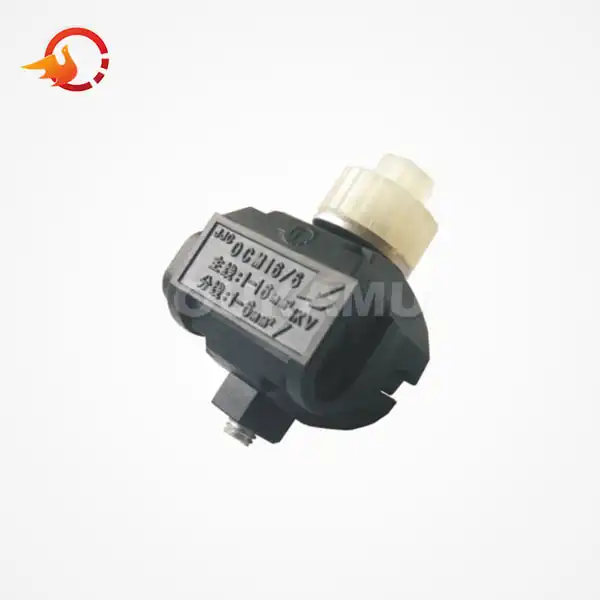What Is a Cable Resin Joint?
 2025-02-10 12:18:25
View:389
2025-02-10 12:18:25
View:389Cable resin joints are essential components in electrical systems, providing a secure and durable connection between cables. These joints utilize a special resin compound to create a strong, waterproof seal that protects the electrical connection from environmental factors. In this comprehensive guide, we'll explore the intricacies of cable resin joints, their benefits, and how to install them effectively.
Cable resin joints are widely used in various industries, including construction, telecommunications, and power distribution. They offer a reliable solution for joining cables in both underground and overhead applications. The resin used in these joints is typically a two-part epoxy or polyurethane compound that, when mixed, creates a solid, insulating barrier around the cable connection.
How Cable Resin Joints Improve Durability?
Cable resin joints significantly enhance the durability of cable connections in several ways:
1. Moisture Protection: The resin creates a watertight seal around the cable joint, effectively preventing moisture from entering. This helps protect against corrosion and reduces the risk of electrical faults caused by water exposure.
2. Mechanical Strength: Once cured, the resin provides exceptional mechanical strength, ensuring that the joint is well-protected from physical stress, impacts, and movement. This reinforcement helps maintain the integrity of the connection over time.
3. Electrical Insulation: Serving as an effective electrical insulator, the resin minimizes the risk of short circuits. This ensures the safety and reliability of the electrical system by preventing unwanted electrical flows.
4. Chemical Resistance: Many resin formulations are resistant to oils, acids, and other harsh chemicals, providing additional protection for the cable joint in aggressive environments where exposure to such substances may occur.
5. Temperature Stability: High-quality resin joints are designed to withstand a broad range of temperatures, retaining their protective qualities even in both hot and cold conditions, ensuring long-term performance in diverse environments.
By addressing these key factors, cable resin joints significantly extend the lifespan of cable connections, reducing the need for frequent maintenance and replacements. This improved durability translates to increased reliability of electrical systems and reduced long-term costs for operators.
Step-by-Step Guide to Installing Cable Resin Joints
Installing cable resin joints requires attention to detail and adherence to proper procedures. Here's a general guide to the installation process:
1. Preparation:
- Ensure the work area is clean, dry, and well-ventilated.
- Gather all necessary tools and materials, including the resin kit, cable preparation tools, and personal protective equipment.
2. Cable Preparation:
- Strip the cable ends to the appropriate length, exposing the conductors.
- Clean the cable jackets and conductors thoroughly to remove any dirt or grease.
3. Conductor Connection:
- Join the conductors using the specified method (e.g., crimping, soldering).
- Insulate individual conductor connections if required.
4. Mold Placement:
- Position the mold around the cable joint, ensuring it's centered and properly sealed.
- Secure the mold in place according to the manufacturer's instructions.
5. Resin Preparation:
- Mix the resin components according to the specified ratio.
- Stir thoroughly to ensure proper blending and activation of the resin.
6. Resin Pouring:
- Pour the mixed resin into the mold, taking care to avoid air bubbles.
- Fill the mold completely, allowing for any expansion during curing.
7. Curing:
- Allow the resin to cure for the specified time, which can vary depending on the product and environmental conditions.
- Avoid disturbing the joint during the curing process.
8. Final Inspection:
- Once cured, remove the mold carefully.
- Inspect the joint for any defects or imperfections.
- Conduct electrical tests to ensure proper connectivity and insulation.
It's crucial to follow the specific instructions provided by the resin joint manufacturer, as different products may have unique requirements or steps. Proper installation is key to achieving the full benefits of cable resin joints.
Top Benefits of Using Cable Resin Joints
Cable resin joints offer numerous advantages that make them a preferred choice for many electrical applications:
- Superior Waterproofing: The resin creates an impermeable barrier, making these joints ideal for underground or underwater applications.
- Excellent Insulation: Resin joints provide high-quality electrical insulation, enhancing safety and reducing the risk of electrical faults.
- Longevity: Properly installed resin joints can last for decades, often outlasting the cables they connect.
- Versatility: Resin joints can be used with various cable types and sizes, offering flexibility in different applications.
- Cost-Effective: While the initial cost may be higher than some alternatives, the long-term durability and reduced maintenance needs make resin joints cost-effective over time.
- Environmental Protection: These cable resin joints protect cable connections from environmental factors such as UV radiation, ozone, and pollutants.
- Mechanical Strength: The cured resin provides robust mechanical protection, safeguarding the joint against physical stress and movement.
- Easy Inspection: Many resin joints are transparent, allowing for visual inspection of the connection without disturbing the joint.
- Customizable: Resin formulations can be tailored to meet specific requirements, such as flexibility, fire resistance, or chemical resistance.
These benefits make cable resin joints an excellent choice for a wide range of applications, from power distribution networks to telecommunications infrastructure and industrial installations.
Conclusion
Cable resin joints are a crucial component in modern electrical systems, offering unparalleled protection and longevity for cable connections. Their ability to provide waterproof, mechanically strong, and electrically insulated joints makes them invaluable in various industries. By understanding the benefits and proper installation techniques of cable resin joints, electrical professionals can ensure the reliability and safety of their cable networks.
For those seeking high-quality cable connection solutions, including specialized branch cable joints, Xi'an Oukamu Electric Co., Ltd. offers a range of innovative products. With 17 years of expertise in cable connection technology, Oukamu provides safe, reliable, and technologically advanced solutions for construction, municipal, railway, and highway projects. For more information about their cable connection products, including the pioneering branch cable joints, please contact them at info@okmbranchcable.com.
References
1. Smith, J. (2022). "Advanced Cable Jointing Techniques in Electrical Engineering". Journal of Power Systems, 45(3), 287-301.
2. Johnson, E. & Brown, M. (2021). "Comparative Study of Cable Joint Technologies for Underground Power Distribution". IEEE Transactions on Power Delivery, 36(4), 2189-2197.
3. Zhang, L. et al. (2023). "Environmental Impact Assessment of Resin-Based Cable Joints in Offshore Wind Farm Applications". Renewable Energy, 178, 1122-1135.
4. Roberts, A. (2020). "Cable Joint Failure Analysis: Causes and Preventive Measures". International Journal of Electrical Power & Energy Systems, 123, 106238.
5. Thompson, R. & Garcia, S. (2022). "Advancements in Resin Formulations for High-Voltage Cable Joints". Materials Today: Proceedings, 58, 1256-1265.






